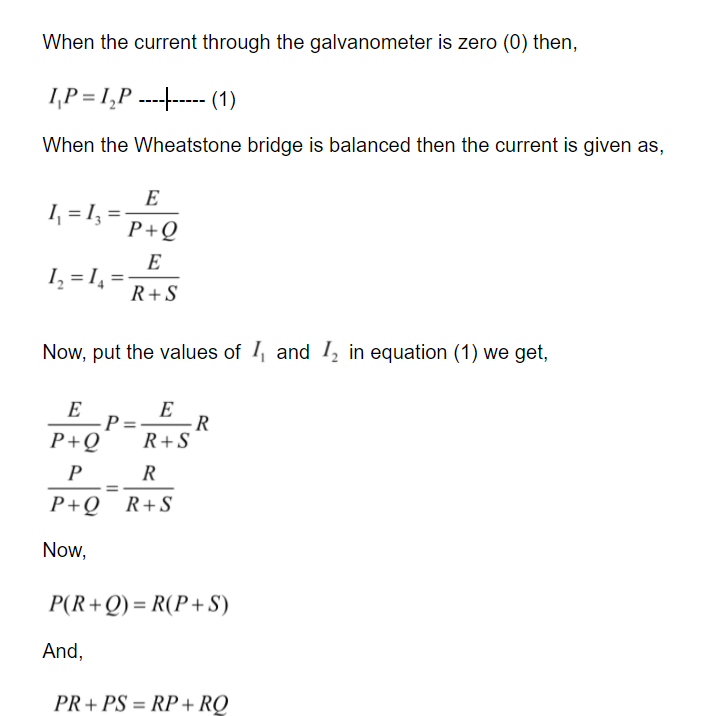The Wheatstone Bridge is said to have been invented by Sir Charles Wheatstone. But the first illustration of the bridge was given by Samuel Hunter Christie. He designed the bridge for the comparison of the electromagnetic forces in different metals. He proposed the bridge to determine the unknown resistance connected in circuits. The bridge worked because of a diamond-shaped arrangement with four resistors. That is why he called the method the diamond method.
Samuel Hunter Christie later mentioned the method in the article describing the electromagnetic conductivity of various metals. Samuel Hunter Christie mentioned in the paper that the conductivity of different wires depends on the diameter of the wire and the length of wire. Fortunately, the document was selected. But the council focused on electromagnetic research. The diamond method he founded received little attention. Therefore, this method was not very well known among the people.
Wheatstone Bridge
Wheatstone bridge is used to determine the unknown resistance which is connected in an electrical circuit. Wheatstone bridge involves four resistors where two resistors are known resistors, one is variable resistor and one is unknown resistor. Wheatstone bridge also contains a galvanometer. It has two series-parallel arrangements of resistors.
Wheatstone bridge is also called a resistance bridge which is used to calculate the value of unknown resistors.
Construction of Wheatstone Bridge (Wheatstone Bridge circuit)
The circuit of Wheatstone bridge (Wheatstone Bridge circuit) involves four resistors where two resistors are known resistors, one is variable resistor and one is unknown resistor. The circuit of Wheatstone bridge also contains a galvanometer and a source of electromotive force. The source of electromotive force is connected between two points a and b and the galvanometer is attached between the point c and point d. The flow of current through the galvanometer depends on potential difference across it.
Principle of Wheatstone Bridge
The principle on which Wheatstone bridge works is null or zero deflection which means that the ratio of their resistances is equal and the current does not flow through the circuit. In normal conditions, the bridge is in an unbalanced state where flow of current is through the galvanometer. The bridge is in balanced condition if there is no current flowing through the galvanometer. This state is achieved by adjusting the known resistor and the variable resistor.
Derivation of Wheatstone Bridge
When the current enters the galvanometer, it divides into two currents L₁ and L2 having equal magnitude.
Wheatstone Bridge formula
Wheatstone Bridge formula is given as:
Application of Wheatstone Bridge
There are various applications of Wheatstone Bridge from which some important applications are given here.
Strain Measurement
In general, strain gauges are used to measure strain, and their resistance varies in proportion to the strain present in the device. In practical terms, the range of strain gauge resistance is from 30 ohms to 300 ohms. As the change in resistance can only be a fraction of full scale, a highly precise and accurate meter is therefore required, and the Wheatstone bridge is perfect for this.
Light Detector Circuit
The light detector circuit is one of the simplest applications of Wheatstone bridge using the photoresist device. A light dependent resistor is kept in place of the unknown resistor in the Wheatstone bridge. An LDR, a passive resistance sensor, is used to convert visible light levels into a change in resistance and then into a voltage. LDR has a resistance of about 900 ohms in dark light (at 100 lux light intensity) and less than 30 ohms in bright light.
The Wheatstone bridge is used to accurately measure low resistance.
Wheatstone bridge with operational amplifier is used to determine physical parameters like temperature, light, and strain.
Quantities like impedance, inductance, and capacitance are determined by using the variations on Wheatstone bridge.
Limitations of Wheatstone Bridge
- For the measurement of low resistance, the resistance of the leads and contacts will become important and initiate an error.
- For the measurement of high resistance, the measurement given by the Wheatstone bridge is so big that the galvanometer is insensitive to imbalance.
- The other disadvantage is the change in resistance because of the heating effect of the current by the resistance. Excess current may cause the change in values of resistance permanently.
Conclusion
Wheatstone bridge is used to determine the unknown resistance which is connected in an electrical circuit.
The Wheatstone Bridge is said to have been invented by Sir Charles Wheatstone.
Wheatstone bridge involves four resistors where two resistors are known resistors, one is variable resistor and one is unknown resistor.
The principle on which Wheatstone bridge works is null or zero deflection.
The balanced condition of Wheatstone bridge
The value of unknown resistance can be determined by
 Profile
Profile Settings
Settings Refer your friends
Refer your friends Sign out
Sign out











